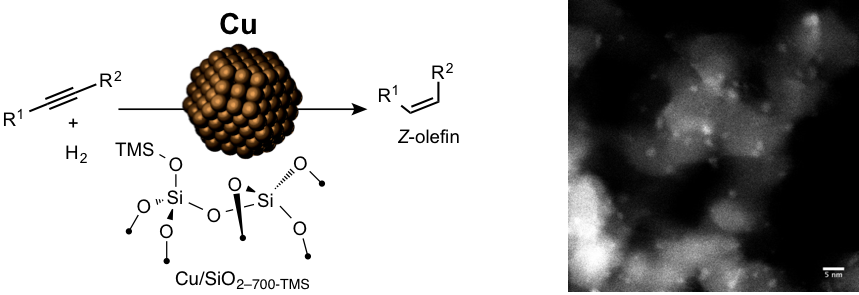Selective Semihydrogenation of Alkynes with Copper Nanoparticles Supported on Passivated Silica
Semihydrogenation of alkynes to Z-alkenes is an important industrial process catalyzed by noble-metal-based systems, in particularly Pd.1 The scarcity and high price of such catalysts spur the development of alternative earth-abundant semihydrogenation catalysts. For instance, supported Cu nanoparticles were found to catalyze the semihydrogenation of propyne under flow conditions.2 Surface organometallic chemistry offers a general approach to small narrowly-dispersed supported metallic nanoparticles using molecular organometallic precursors.3 With this methodology, our group has prepared silica-supported Cu particles and utilized high-throughput screening to identify PCy3 as a ligand for the highly chemo- and stereoselective semihydrogenation of alkynes into Z-olefins.4 Here, we explore the modification of the support through passivation5 of the OH group to modify the adsorption properties of the supports and to enable the use of broader ligand libraries.

Fig.1. General scheme of selective alkyne semihydrogenation (left) and high-angle annular dark field transmission electron microscopy image of Cu nanoparticles on passivated silica (right).
[1] G. Vilé et al., ChemCatChem 2016, 8, 21.
[2] N. J. Ossipoff et al., J. Catal. 1994, 148, 125.
[3] C. Coperet et al., Chem. Rev. 2016, 116, 323.
[4] A. Fedorov et al., J. Am. Chem. Soc. 2016, 138, 16502.
[5] E. Oakton et al., Dalt. Trans. 2014, 43, 15138.